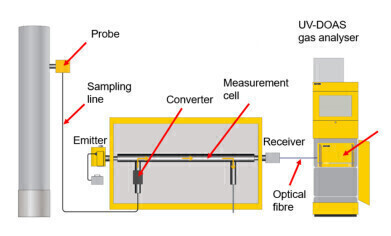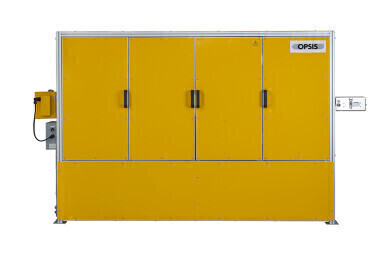Industrial Emissions
Rest assured industrial mercury emission analysis just became a whole lot easier
Jul 25 2023
Mercury is a specific element; in its elemental form (HG0) mercury is relatively easy to handle and measure. However, in chemical and combustion processes, mercury will be oxidised to some degree, to be measured, these forms of mercury (HG+, HG++) need to be reduced to elemental mercury in a converter process. The first accepted method for performing such reductions was based on wet chemistry, it is still perceived to be the standard method, but this procedure can only be carried out in a lab. Another method involves the use of an extremely high-temperature oven, which breaks down the chemical bonds thus enabling mercury to be analysed, but, whilst this can take the process away from the lab, it is not without problems of its own, in terms of reliability.
The OPSIS System400Hg provides an alternative approach, which compares very favourably with the alternatives. The reduction is carried out in a temperature-controlled canister using a material that reduces the oxidised forms to elemental mercury at a relatively low-temperature range of 235-250 °C. This is a solution that is reliable and durable, and it works reliably for unattended, extended periods with no measurement drift. The OPSIS System400Hg extracts a sample gas flow through a heated probe with a dust filter. The flow rate is a few litres per minute. The flow goes through a heated sample line and then through the reduction converter. Gas containing elemental mercury is then ready to be measured in the temperature-controlled stainless-steel cell, with quartz glass windows.
The OPSIS UV-DOAS is a well-established technology for type-approved, certified measurements of a wide variety of gases, including elemental mercury. The system includes a source emitter with a Xenon lamp that produces a well-collimated beam of white, full-spectrum, light. On the other side of the measurement cell, there is a receiver that collects the light and sends the signal through a fibre optic cable to the UV-DOAS spectrometer. The analyser digitises and collects hundreds of samples per second and its integrated computer calculates the results and communicates the information to external data collection systems.
The OPSIS UV-DOAS is a non-intrusive type of gas analysis system that has no direct contact with the process gas; the measurement is made optically. This leads to significantly improved reliability and durability when compared to conventional technologies.
The already TUV-certified OPSIS System400Hg combines the features of UV-DOAS technology with the most recent advances in mercury reduction technology. With ever more stringent global legislation for mercury emission, this state-of-the-art analyser takes the stress away when reliable and precise measurements are needed for environmental compliance and protecting communities.
Digital Edition
AET 28.3 September 2024
September 2024
Business News - ENVEA announces acquisition of APAQ Group - SICK and Endress+Hauser sign strategic partnership - Efforts to curb gas flaring intensify amid environmental concerns Air Monito...
View all digital editions
Events
WEATHER • CLIMATE • WATER / EARTH OBSERVATIONS / GREEN ECONOMY
Oct 29 2024 St. Petersburg, Russia
Oct 30 2024 Hong Kong
Nov 05 2024 Toronto, Canada
Nov 05 2024 Rimini, Italy
Nov 06 2024 Ho Chi Minh City, Vietnam




















